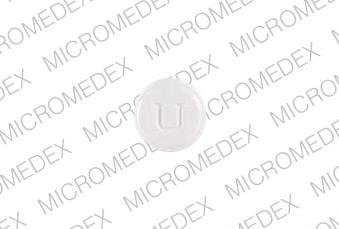Mirapex Disease Interactions
There are 4 disease interactions with Mirapex (pramipexole).
Dopamine agonists (applies to Mirapex) hypotension
Major Potential Hazard, Moderate plausibility.
Dopamine agonists may impair the systemic regulation of blood pressure, with resultant orthostatic hypotension, especially during dose escalation. Therapy with dopamine agonists should be monitored carefully in patients with Parkinson's disease since they may have an impaired ability to respond to an orthostatic challenge, and also in patients receiving antihypertensive drugs.
References
- Hoehn MM "Levodopa-induced postural hypotension. Treatment with fludrocortisone." Arch Neurol 32 (1975): 50-1
- Iwasaki S, Hamaguchi K, Iwasaki A, Takakusagi M, Narabayashi Y "Hypotensive effect of long-term levodopa in patients with Parkinson's disease." Eur Neurol 30 (1990): 194-9
- "Product Information. Dostinex (cabergoline)." Pharmacia and Upjohn PROD (2001):
- "Product Information. Sinemet (carbidopa-levodopa)." DuPont Pharmaceuticals PROD (2001):
- "Product Information. Sinemet CR (carbidopa-levodopa)." DuPont Pharmaceuticals PROD (2001):
- "Product Information. Mirapex (pramipexole)." Boehringer Ingelheim PROD (2001):
- "Product Information. Requip (ropinirole)." SmithKline Beecham PROD (2001):
- "Product Information. Comtan (entacapone)." Novartis Pharmaceuticals PROD (2001):
- "Product Information. Azilect (rasagiline)." Teva Pharmaceuticals USA (2006):
- "Product Information. Neupro (rotigotine)." Schwarz Pharma (2007):
- "Product Information. Xadago (safinamide)." US WorldMeds LLC (2017):
Dopamine agonists (applies to Mirapex) neuroleptic malignant syndrome
Major Potential Hazard, Low plausibility.
The use of dopamine agonists is contraindicated in patients with neuroleptic malignant syndrome (NMS). NMS is characterized by hyperthermia, muscle rigidity, altered mental status, irregular pulse or blood pressure, tachycardia, and diaphoresis. The syndrome may rarely be precipitated by abrupt discontinuation of the dopamine agonist.
References
- Friedman JH, Feinberg SS, Feldman RG "A neuroleptic malignantlike syndrome due to levodopa therapy withdrawal." JAMA 254 (1985): 2792-5
- Genis D "Neuroleptic malignant syndrome: impaired dopaminergic systems?" Neurology 35 (1985): 1806
- Rainer C, Scheinost NA, Lefeber EJ "Neuroleptic malignant syndrome. When levodopa withdrawal is the cause." Postgrad Med 89 (1991): 175-8,
- Gibb WR, Griffith DN "Levodopa withdrawal syndrome identical to neuroleptic malignant syndrome." Postgrad Med J 62 (1986): 59-60
- "Product Information. Mirapex (pramipexole)." Boehringer Ingelheim PROD (2001):
Dopaminergic antiparkinson agents (applies to Mirapex) psychosis
Major Potential Hazard, Moderate plausibility.
Ordinarily, patients with major psychotic disorder should not be treated with dopaminergic antiparkinson agents, because of the risk of exacerbating psychosis. Hallucinations and psychotic-like behavior have been reported with dopaminergic medications. In addition, certain medications used to treat psychosis may exacerbate the symptoms of Parkinson's disease and may decrease the effectiveness of these drugs.
References
- "Product Information. Dostinex (cabergoline)." Pharmacia and Upjohn PROD (2001):
- "Product Information. Mirapex (pramipexole)." Boehringer Ingelheim PROD (2001):
- "Product Information. Requip (ropinirole)." SmithKline Beecham PROD (2001):
- "Product Information. Comtan (entacapone)." Novartis Pharmaceuticals PROD (2001):
- "Product Information. Lodosyn (carbidopa)." DuPont Pharma PROD (2001):
- "Product Information. Azilect (rasagiline)." Teva Pharmaceuticals USA (2006):
- "Product Information. Neupro (rotigotine)." Schwarz Pharma (2007):
- "Product Information. Xadago (safinamide)." US WorldMeds LLC (2017):
Pramipexole (applies to Mirapex) renal function disorders
Major Potential Hazard, Moderate plausibility. Applicable conditions: Renal Dysfunction
Pramipexole is eliminated by the kidneys, and approximately 90% of the drug is excreted unchanged in the urine. Renal insufficiency decreases the renal clearance and increases the half-life. Therapy with pramipexole should be administered cautiously and at a reduced dose in patients with compromised renal function. Pramipexole clearance is extremely low in dialysis patients, as a negligible amount of the drug is removed by it.
References
- Wright CE, Sisson TL, Ichhpurani AK, Peters GR "Steady-state pharmacokinetic properties of pramipexole in healthy volunteers." J Clin Pharmacol 37 (1997): 520-5
- "Product Information. Mirapex (pramipexole)." Boehringer Ingelheim PROD (2001):
Mirapex drug interactions
There are 257 drug interactions with Mirapex (pramipexole).
Mirapex alcohol/food interactions
There is 1 alcohol/food interaction with Mirapex (pramipexole).
More about Mirapex (pramipexole)
- Mirapex consumer information
- Check interactions
- Compare alternatives
- Reviews (121)
- Drug images
- Side effects
- Dosage information
- Patient tips
- During pregnancy
- Drug class: dopaminergic antiparkinsonism agents
- Breastfeeding
Related treatment guides
Drug Interaction Classification
| Highly clinically significant. Avoid combinations; the risk of the interaction outweighs the benefit. | |
| Moderately clinically significant. Usually avoid combinations; use it only under special circumstances. | |
| Minimally clinically significant. Minimize risk; assess risk and consider an alternative drug, take steps to circumvent the interaction risk and/or institute a monitoring plan. | |
| No interaction information available. |
Further information
Always consult your healthcare provider to ensure the information displayed on this page applies to your personal circumstances.


